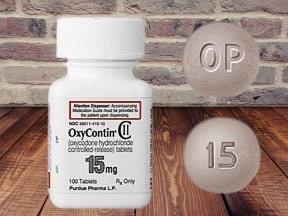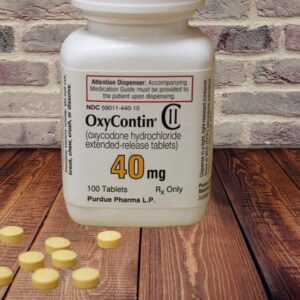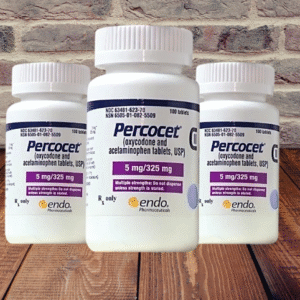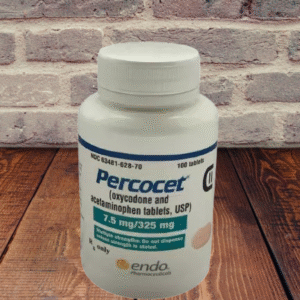Oxycodone
Showing all 8 results
-
Opioids
OxyContin 80 mg
$225.00 – $720.00 Select options This product has multiple variants. The options may be chosen on the product page -
Opioids
OxyContin® 15 mg
$120.00 – $420.00 Select options This product has multiple variants. The options may be chosen on the product page -
Opioids
OxyContin® 40 mg
$165.00 – $570.00 Select options This product has multiple variants. The options may be chosen on the product page -
Opioids
Percocet® 10 mg / 325 mg
$150.00 – $550.00 Select options This product has multiple variants. The options may be chosen on the product page -
Opioids
Percocet® 5 mg / 325 mg
$110.00 – $400.00 Select options This product has multiple variants. The options may be chosen on the product page -
Opioids
Percocet® 7.5 mg / 325 mg
$120.00 – $420.00 Select options This product has multiple variants. The options may be chosen on the product page -
Opioids
Roxicodone 15 mg
$120.00 – $420.00 Select options This product has multiple variants. The options may be chosen on the product page -
Opioids
Roxicodone® 30 mg
$165.00 – $570.00 Select options This product has multiple variants. The options may be chosen on the product page
Oxycodone For Sale Online

The active ingredient, oxycodone, is a painkiller from the class of opioids and is used for severe to moderate pain. Opioids are generally considered to be the safest and most effective pain relievers available. The analgesic effect of oxycodone surpasses that of the well-known morphine.
This is how oxycodone works
Oxycodone is a highly effective opioid pain reliever. It is also anxiolytic, antitussive, and sedative.
In most cases, pain is caused by painful stimuli such as an injury or inflammation.
Pain intensity and location information is conveyed to the brain via peripheral nerves and the spinal cord.
This is where the pain is processed consciously and perceived. Because they have the ability to suppress this core pain perception, opioids like oxycodone are analgesics (painkillers).
Opioids are produced synthetically. These include methadone, oxycodone (OxyContin®, Roxicodone®, and Percocet®), and fentanyl. Opiates, in contrast, come from natural sources. For instance, morphine and codeine are two of them and are both made from the dried latex of the opium poppy (opium).
The body’s own painkilling chemicals, known as endorphins, connect to the same receptor sites as opiates and opioids and have a similar impact.
As a result, they are sometimes referred to as endogenous opioids.
Intake, degradation, and excretion
The active ingredient in an oxycodone tablet is almost completely (about 60 to 85 percent) absorbed into the body’s bloodstream. The pain-relieving effect kicks in after about 60 minutes and generally lasts about four hours. But there are also preparations with a prolonged effect – they work for eleven to 14 hours.
Oxycodone is eventually broken down by certain enzymes in the liver (cytochrome P450, such as CYP3A4) and excreted through the kidneys.
When is oxycodone used?
Oxycodone is one of the very strong painkillers. It is slightly more potent than morphine and is used to treat severe and severe pain, such as:
- Pain due to damage or disease of the nervous system (neuropathic pain)
- Pain due to cancer
This is how oxycodone is used
Oxycodone is only used to treat severe pain. The active ingredient is usually administered orally, as a tablet or capsule, sometimes as a solution. You can also give the painkiller directly into a vein (as an intravenous injection/ infusion ).
The dosage is determined by the doctor and gradually increased until the desired effect is achieved. The dose required for this varies from person to person. At the beginning of treatment, the patient usually receives the painkiller twice a day.
The preparations usually contain the active ingredient in the form of salts such as oxycodone hydrochloride (oxycodone HCl). The salt form of an active substance is necessary in the manufacture of pharmaceuticals in order to convert the active substance into a form that is soluble in the gastrointestinal tract.
What are the side effects of oxycodone?
The following are very common with the use of opioids such as oxycodone:
- constipation
- narrowing of the pupil (miosis)
The following side effects rarely occur:
- muscle twitching, tightening of the muscles in the chest (muscle rigidity)
- absence of menstruation (secondary amenorrhea)
- sleep disorders
- Mood swings (such as euphoria or depression)
Central side effects such as hallucinations, confusion, vomiting, and nausea occur less frequently with oxycodone than with other opioids. Allergic reactions are also much rarer.
Tolerance to oxycodone can develop if taken regularly, which means that the painkiller loses its effectiveness. Then you either have to increase the dosage to get the same painkilling effect as when you started treatment, or switch to a different painkiller.
With the prolonged intake of high doses of oxycodone, physical (physical) dependence may develop. This can be problematic, especially in the case of chronic (long-term) pain therapy.
The intake of the painkiller must therefore not be stopped suddenly. Otherwise, withdrawal symptoms such as sweating, palpitations (tachycardia), and psychomotor restlessness would occur. If the intake is to be stopped, the dose of the painkiller must be gradually reduced.








